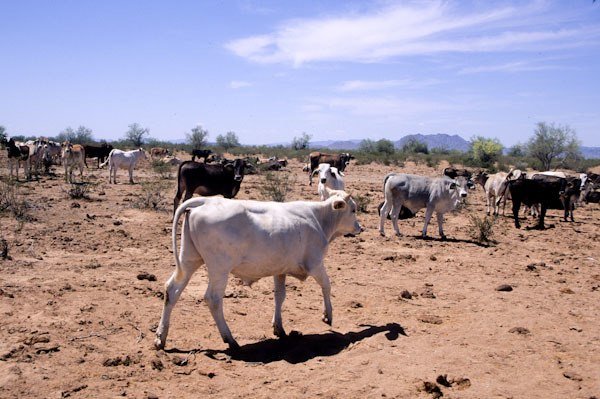
To Think Like a Mountain: Environmental Challenges in the American West
Featured Image: Cows and cow trashed lands Sonoran Desert NM Arizona © George Wuerthner
By Niels Sparre Nokkentved, Review by John Miles
For nearly four decades, investigative journalist Niels Nokkentved has covered environmental issues in the American West, mostly from his base in Idaho where he was a newspaper reporter and from 2005 to 2015 an information specialist for the Idaho Department of Fish and Game. Eleven thoroughly researched chapters in To Think Like a Mountain describe issues that are as alive and contentious today as they were when he reported on them over the years.
Nokkentved’s title derives from an iconic and inspiring passage in Aldo Leopold’s “Sections Here and There” of A Sand County Almanac. This metaphor is often used in conservation literature such as Thinking Like a Mountain: Towards a Council of All Beings, by John Seed, author Joanna Macy, or Thinking Like a Mountain: Aldo Leopold and the Evolution of an Ecological Attitude Toward Deer, Wolves, and Forests by Susan Flader, plus countless university class syllabi and conservation newsletter titles.
Nokkentved’s approach is to document the history of an environmental issue, explore how and why we will be better served by Leopold’s metaphorical “thinking like a mountain,” explain the issues’ complexities and clashing values of the parties involved, and where it stood when he concluded his coverage. For instance, in “Private Livestock, Public Lands,” he recounts how public land grazing of cattle and sheep began and how it has in particular damaged the long-term health of arid sagebrush grasslands. “Livestock grazing on most public lands . . . is not economically defensible” and “is subsidized by taxpayers and has damaged public lands, including important fish and wildlife habitat.” Why are taxpayers subsidizing practices that damage the public domain? Because in part, writes Nokkentved, “Livestock grazing and ranching evoke a pioneer ethic and visions of times gone by.” Romantic notions of cowboys and the wild west, of a culture of individualism and self-reliance associated with ranching, help protect it. Some ranchers have been grazing so long on the public land that they have come to see it as a property right. Nokkentved points out as well that more than half the public land grazing permits are held by 2% of permit holders, “mostly large corporations or wealthy individuals.” Family ranchers are not the only beneficiaries of public land grazing.
If, Nokkentved suggests, we were “thinking like a mountain,” we would significantly reduce livestock grazing on public lands where that damage is clear. Where grazing was permitted, we would charge a fee that would make economic sense, reducing or eliminating the grazing subsidies and “In the long term the money [saved] might be better spent supporting land uses and efforts that help restore degraded ecosystems.” He points out that “No one expects the government to subsidize money-losing steel mills so they can stay in business; yet taxpayers are expected without question to subsidize money-losing livestock grazing that threatens western public lands, watershed, fish and wildlife and the landscape that supports us all.” Since many experts agree that “the ecological effects of livestock grazing on public lands are more widespread than any other human activity in the West,” change on this front should be a high priority, but as of this writing it is not.
Other issues Nokkentved describes are proposed drilling in the Arctic National Wildlife Refuge, oil and gas development in southwest Utah that threatens ancient archaeological sites, mining past and present that threatens water quality across the West, protection of threatened Sage Grouse, and the growing threat of wildfire. He also covers restoration of beaver, threats of raising hatchery salmon to replace declining wild salmon runs, overcutting of ancient forests, and protecting remaining wild land from various threats.
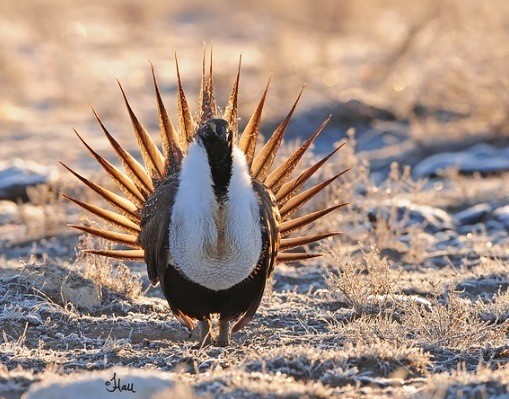
Greater Sage Grouse © BLM
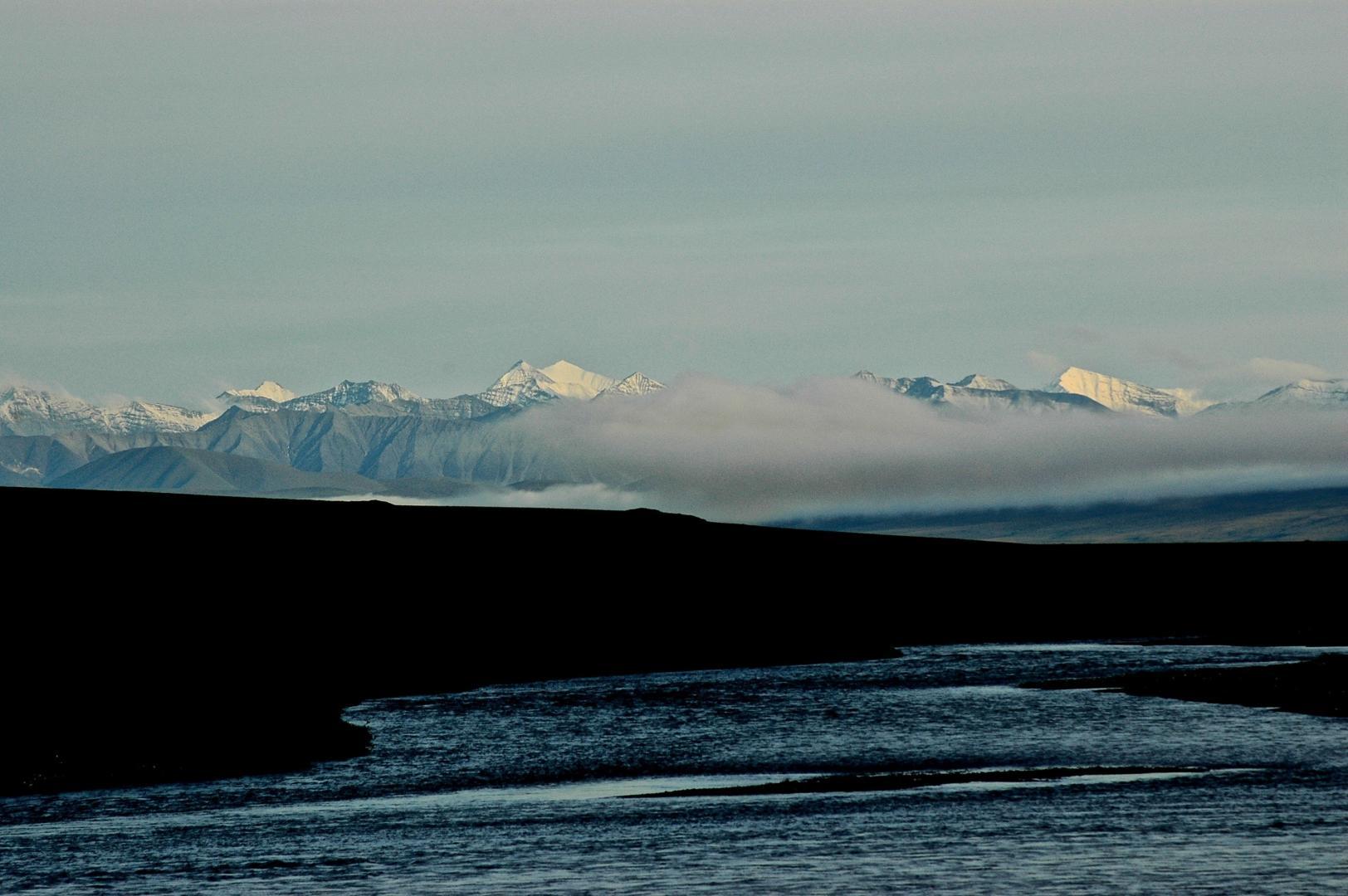
Snowy Brooks Range, Canning River, Arctic NWR © Dave Foreman
Nokkentved’s accounts of the issues he treats in this book include visits to sites in the field and interviews with players in the story. His fact-filled essays are not just journalistic reports but are compelling stories of struggles under way to protect nature in the West. These stories come and go in the media, but as he points out time after time, they are stories that continue and in which the stakes are very high. This small book (244 pages) is an excellent primer on the nature of environmental issues in the American West. A read through all of the cases he explores reveals the importance and complexity of challenges we face that are “out there” in the West and not of interest or concern to many Americans who likely only come there to visit national parks. For those of us who live in the West, the long-running issues seem so intractable that we prefer not to think about them – but we must.
Nokkentved says this in his conclusion:
These are some of the issues that face us as the owners of those 673 million acres we call public lands. Of course, private lands are also affected by the same conflicts. Individuals are affected differently by these issues, varying with the source of their livelihoods. Still, none of us can escape the limits of the resources available on this little planet, and there are appropriate places for most uses and activities. Some might argue that human needs or values must always take precedence, and they typically value resources uses or extraction at the expense of other values. I would urge them to work with nature, not against it, for nature does not respect our human values.
I think Nokkentved chose Aldo Leopold’s oft used powerful metaphor urging us “to think like a mountain” as his title because the issues he chooses to profile all involve actions that, if we were to take the long view, we would not have chosen in the past and would not be choosing in the present. Is it naïve to suggest in this Age of Trump that we can cast off short-term profit, greed, and selfishness to act in our long-term self-interest? Perhaps, but those of us who think long term must advocate for it, as Nokkentved does here. His final sentence says why we must. “When we think like a mountain, we will have clean air and water, forests will thrive, wild salmon will spawn naturally and make thousand-mile journeys to their natal streams, sage grouse will strut their stuff on their leks in the western sagebrush grasslands, and the wild green fire will burn in the eyes of the wolf – and that benefits us all.”
As I read this book, a thought struck me that might inject some hope into a story of intractable environmental challenges such as those Nokkentved describes. A word that never appears in the book is “Anthropocene,” the identification of a geological epoch proposed in 1999 characterized by the ascendance of human impact on nature to the point that it is a geological force. British nature writer Robert Macfarlane has said of this idea that “it feels at best a conceit, at worst a perilous vanity.” The “conceit” of the Anthropocene is hubris (I like writer Craig Child’s term “Hubriscene” better) and we know where that takes us, but what if we are such a force as to be considered of epochal geological significance? Might we not use such power to change the course of our thinking as we must if we are to alter our time horizon “to think like a mountain?” That’s grist for an essay in itself, but we can only hope the very idea of we humans as an epochal geological force will be enough to generate the necessary humility to think that way.
____________________________
David Brower, then Executive Director of the Sierra Club, gave a talk at Dartmouth College in 1965 on the threat of dams to Grand Canyon National Park. John, a New Hampshire native who had not yet been to the American West, was flabbergasted. “What Can I do?” he asked. Brower handed him a Sierra Club membership application, and he was hooked, his first big conservation issue being establishment of North Cascades National Park.
After grad school at the University of Oregon, John landed in Bellingham, Washington, a month before the park was created. At Western Washington University he was in on the founding of Huxley College of Environmental Studies, teaching environmental education, history, ethics and literature, ultimately serving as dean of the College.
He taught at Huxley for 44 years, climbing and hiking all over the West, especially in the North Cascades, for research and recreation. Author and editor of several books, including Wilderness in National Parks, John served on the board of the National Parks Conservation Association, the Washington Forest Practices Board, and helped found and build the North Cascades Institute.
Retired and now living near Taos, New Mexico, he continues to work for national parks, wilderness, and rewilding the earth.

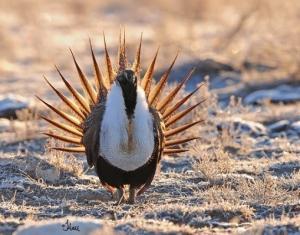
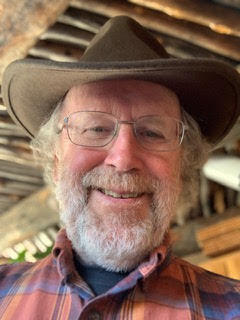
There’s another recent book out there that covers some of the same ground: THIS LAND: HOW COWBOYS, CAPITALISM, AND CORRUPTION ARE RUINING THE AMERICAN WEST by Christopher Ketcham (2019).